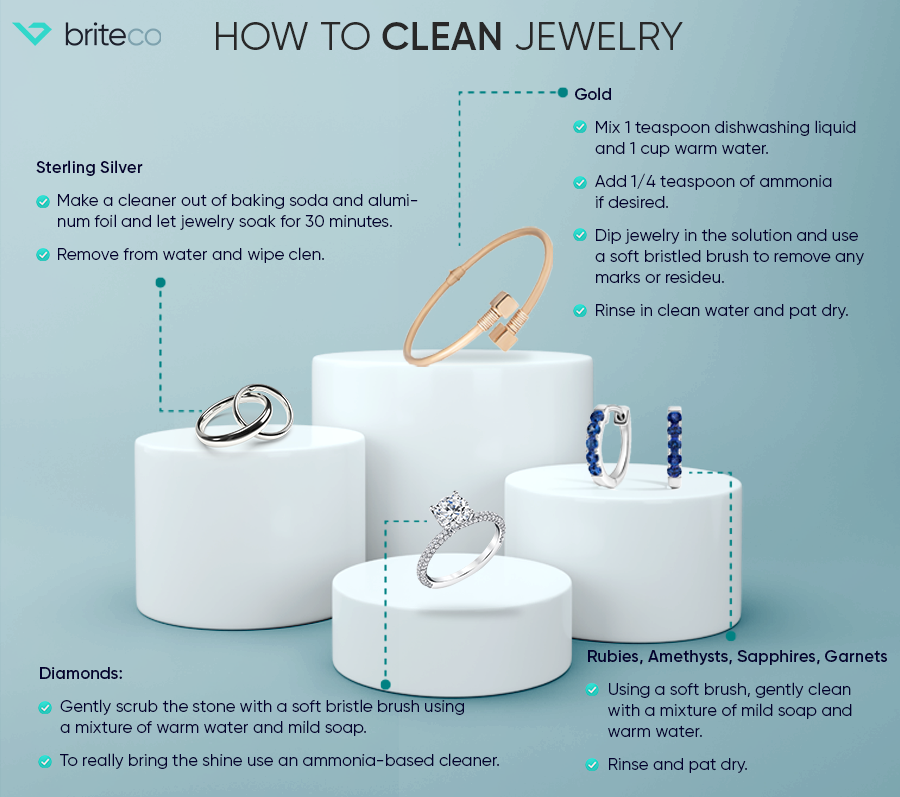
Keeping your jewelry sparkling is essential for maintaining its beauty and value. Regular cleaning helps remove dirt, oils, and grime that can dull the shine of precious metals and gemstones. However, it’s crucial to approach jewelry cleaning with care, as some methods can be damaging if not performed correctly.
This article will delve into the potential risks associated with overnight soaking for jewelry cleaning and provide safe and effective alternatives. We’ll explore factors like metal type, gemstone hardness, and best practices to ensure your cherished pieces remain in pristine condition.
Jewelry Cleaning Risks
While regular cleaning is vital, improper techniques can lead to irreversible damage. Harsh chemicals, abrasive materials, and excessive heat can all negatively impact the integrity of both metals and gemstones.
For instance, using a bleach-based cleaner on silver jewelry can cause discoloration and pitting. Similarly, scrubbing delicate gemstones with a toothbrush or steel wool can scratch their surfaces, diminishing their brilliance. It’s important to remember that not all cleaners are suitable for every type of jewelry. Always consult the product instructions and consider the specific materials involved before cleaning.
Overnight Soaking Dangers
Leaving your jewelry submerged in a cleaner overnight might seem like an efficient way to deep clean, but it can pose significant risks. Extended exposure to harsh chemicals can weaken metal alloys, leading to corrosion or discoloration.
Gemstones, too, are susceptible to damage from prolonged soaking. Certain stones, like pearls and opals, are porous and can absorb excess moisture, causing them to crack or lose their luster. Even if a cleaner is labeled as safe for overnight use, it’s best to err on the side of caution and limit soaking time to avoid potential harm.
Safe Cleaning Practices
To ensure your jewelry remains beautiful and undamaged, follow these safe cleaning practices:
- Choose the Right Cleaner: Select a cleaner specifically formulated for your type of jewelry. Avoid harsh chemicals like bleach or ammonia, which can be damaging.
- Gentle Agitation: Use a soft-bristled brush or cloth to gently agitate the cleaner and loosen dirt. Avoid scrubbing vigorously, as this can scratch surfaces.
- Rinse Thoroughly: After cleaning, rinse your jewelry thoroughly with lukewarm water to remove any residual cleaner.
- Dry Carefully: Pat your jewelry dry with a clean, soft cloth. Avoid using heat or direct sunlight to dry, as this can cause damage.
Metal Type Considerations
Different metals require different cleaning approaches:
Gold Jewelry
Gold is relatively durable and can withstand most gentle cleaning methods. Use a mild soap solution or a specialized gold cleaner. Avoid abrasive materials or harsh chemicals.
Silver Jewelry
Silver tarnishes easily, so regular cleaning is essential. Use a silver polishing cloth or a specialized silver cleaner. Avoid using bleach-based cleaners, as they can damage the surface.
Platinum Jewelry
Platinum is highly resistant to tarnish and scratches. A mild soap solution or warm water with a few drops of dish soap is usually sufficient for cleaning.
Gemstone Hardness
Gemstones vary in hardness, which affects their susceptibility to scratching:
Hard Gemstones (Diamond, Sapphire, Ruby)
These gemstones are very durable and can withstand most cleaning methods. Use a soft-bristled brush or cloth with a mild cleaner. Avoid harsh chemicals or abrasive materials.
Soft Gemstones (Opal, Pearl, Emerald)
These gemstones are more delicate and require gentle cleaning. Use lukewarm water and a soft cloth. Avoid using any harsh chemicals or ultrasonic cleaners.
Conclusion
Maintaining the beauty of your jewelry involves understanding the risks associated with certain cleaning practices. While overnight soaking might seem convenient, it can lead to irreversible damage to both metals and gemstones. By following safe cleaning practices, considering metal type and gemstone hardness, and opting for shorter cleaning durations, you can keep your cherished pieces sparkling for years to come. Remember, a little care goes a long way in preserving the value and brilliance of your jewelry.
